Description
“High quality agatized dinosaur bone, or “gembone”, is one of the best gem choices for jewelry & lapidary art creations. Gembone specimens can be traced back to dinosaurs that roamed the earth during the late Jurassic Age around 150 million years ago. Gem quality petrified dinosaur bone specimens are among the rarest fossils in the world.. A true miracle of nature! Dinosaur bone is a gemstone with a magical allure, enduring and preserving a bit of our past, from the absolute mists of time, a stone that anyone with a sense of the fleeting nature of time should find attractive and magical.
Agatized fossilized dinosaur bones are petrified with silica or quartz crystals which gives them their colorful, glassy appearance. This process preserves the actual cell structure of the once living dinosaur. Non-gem grade fossilized dinosaur bones are found in many places around the world but the highly agatized and beautifully colored & patterned dinosaur bone known as “gem bone” is almost exclusively found in the four corners region of the Colorado Plateau in the USA (where the states of Arizona, New Mexico, Utah, and Colorado touch). Look at the photo of the gembone to see the variety of cell structures and colors that can be found only in higher quality agatized dinosaur bone. The wide variety of colors in agatized dino bone are caused by minerals such as chlorite, chromium, iron-oxide and manganese that enter the cells during formation.”
“Agatized Dinosaur Bone
Formation
The permineralization process involves the replacement of natural bone (hydroxyapatite) by various minerals. In select situations, fossilized dinosaur bone, rather than being replaced by ironstone or other such materials, is replaced by chalcedony or cryptocrystalline quartz (synonymous with polychrystalline quartz in Great Britain), an aggregate of microscopic quartz crystals. When this chalcedony is translucent and possesses patterns or bands, it is referred to as agate, with dinosaur bones so permineralized referred to as agatized dinosaur bone, dinosaur gembone, or simply gembone.
One may encounter opalized dinosaur bone in which the marrow spaces or cells of the fossilized bone display common opal, with iron pyrite and/or calcite also being minerals found in dinosaur gembone. Since the most frequent mineral found in dinosaur gembone is chalcedony, it is referred to as agatized dino (saur) bone even if other materials are present as well. This rare and distinctive material may be sold as rough bone, as partly or completely polished pieces or as jewelry pieces, whether in cabachons or finished items, with dinosaur gembone sold legally on private land only in those countries (the United States) that permit its sale.
Location and Chemistry
Most dinosaur gembone is found in the green siltstone beds and lower sandstones of the flood plains and rivers of Utah and Colorado within the Morrison Formation, a late Jurassic deposit of a series of sedimentary rock dating to 150-200 million years ago which stretches through the western United States and into Canada. This formation consists of a series of mudstone, sandstone, siltstone and limestone which, in the two very discrete regions of Colorado/Utah and Patagonia (Argentina/Chile), facilitated the replacement of naturally occurring bony matrix with chalcedony. The chemical composition, refractive indices, density and hardness of dinosaur gembone and its principal gem materials are as follows.
Agate/chalcedony: chemical composition (SiO2, or silica), with a refractive index = 1.53-1.54, a specific gravity = 2.58-2.64, and a hardness on the Mohs scale of 6.5-7.0.
Opal: chemical composition (SiO2-H20, or silica bound with 3-10% water), having a refractive index = 1.45(+0.20 to -080), a specific gravity = 2.15 (+0.8 to -0.9), and a hardness on the Mohs scale of 5-6.5.
Calcite: chemical composition (CaCO3, or calcium carbonate), having a refractive index = 1.486-1.658, a specific gravity = 2.65-2.75, and a hardness on the Mohs scale of 3.
Pyrite: chemical composition (FeS2, iron sulfide), with a specific gravity = 4.9-5.1 and a hardness on the Mohs scale of 6-6.5. Its refractive index is not determinable because this material is opaque.
Coprolite
Coprolite, or fossilized excrement is fecal material that is at least 10,000 years old, the minimum time necessary for such organic material to fossilize. Agatized coprolite is significantly older. Derived from the Greek term kopro, or dung and lithos, or stone, it was initially designated in 1829 by the English geologist and paleontologist Dr. William Buckland.
Coprolite provides paleontologists with a window into the dynamic of ancient animal behavior and biology, yielding valuable information of what food such creatures consumed and the manner in which this food was digested.
Non-gem coprolite may be found throughout the world, but agatized coprolite in the United States is limited to localities in Utah, Colorado, Arizona and Montana. Such agatized coprolite often displays remnants of what dinosaurs consumed in colorful patterns within the coprolite matrix. The size and color of these agatized pockets determines coprolite value barring the discovery of large inclusions of clearly defined bone or plant residua, the presence of which also increase the value of the piece. Since coprolite is a fossil, some countries place restrictions on its export in rough form or as jewelry, even when found on private land.
Value
The value of dinosaur gembone, one of the rarest of gemstones is defined by the factors of color(s), intensity and brightness of color(s), the number of colors, the durability of the material, size of the cells within the marrow space, the cell or marrow pattern, the completeness of the bone, the type of bone (whether it be vertebra, hip, a joint or other site), as well as the presence of agate fortifications and the quality of treatment. These features are further discussed below:
Color of Dinosaur Gembone: Bright canary yellow usually sells at a premium, with green, orange, red and blue also being desirable colors, and with red being the most stable and common of the bright gem grade colors. Lower priced gembone exhibit the more drab colors of brown, gray, mustard and beige, but may be transformed into attractive jewelry for those who appreciate earth tones. Black definition of cell walls is highly desired, as it provides high contrast to the brightly colored marrow cavity and clearly defines the marrow spaces/cells, with white being the second most desirable color for this portion of the gembone, followed by tan, dark brown and other hues.
Intensity and Brightness of Colors/Number of Colors: The brighter and more intense the colors of dinosaur gembone, the more valuable the piece. Other pieces which may be highly prized are those displaying certain pastel colors, such as pink or light blue. Gembone comprised of a single color typically costs less than the multicolored variety. The maximal number of colors greatly sought after by jewelers utilizing this material is nine.
Durability: The geologic process to which dinosaur bone is subjected typically results in at least some degree of deformation or fracturing. The fewer the fractures and the less fragile the bone, the higher the quality, with the best gembone being that composed of chalcedony, a consequence of its hardness (Mohs scale -6.5-7.0). Calcite gembone is less durable and desirable, as it is quite soft (Mohs scale-3.0), thereby lowering the value of such pieces, though a small area of calcite may add some beauty to the gembone, as it can contribute some neon-type colors and a silvery chatoyancy effect, or sheen.
Cell Size and Pattern: So long as the cells are bright, the larger the cells, the more valuable the piece. Cell patterns that are particularly desired are those that may found in dinosaur vertebra (the fanned peacock pattern (rare!)) and, because of its rarity, the tube pattern. While a spiderweb pattern informs that the bone is durable and may add significantly to the value of the piece, such a pattern typically lacks the color sought for jewelry.
Type of Bone/Completeness of Bone: The most highly priced and sought after of dinobone pieces are vertebrae, especially when they are available as matched pairs, with the ends of large bones also being desirable, a consequence of their tendency to display attractive patterns and to exhibit large cells. Those vertebra or joints that are complete are more desirable than those which are partial.
Presence of Agate Fortifications: As Renee Newman notes, “The larger and more colorful the agate pockets, the more valuable the dino bone.” Fortifications are areas of fracture and bony openings that may be filled with banded agate, but may sometimes be filled with calcite crystals, citrine or amethyst.
Treatment Quality: Since it is expected for dinosaur bone to exhibit at least some fracturing after millions of years being subjected to the dynamic pressures of geologic processes, collector specimens of dinosaur bone are characteristically stabilized, as they are larger than jewelry pieces and must be as large as possible in order to command a high price. The fractures of such pieces are held together with Super Glue or epoxy when cut and polished. If successful, the stabilization treatment may yield a finished piece that is both more stable and more attractive than the original unfinished piece. The skill with which such treatments are imparted defines the enhanced value applied to the collector specimen. Top-grade jewelry bone, in contrast, will have no treatment at all, as these pieces are typically smaller pieces. If any treatment or stabilization has been made to the piece in order to fill a void or fracture, it must be disclosed. Untreated gembone is more highly valued in such scenarios.
In sum, while most gembone available for sale is not of investment quality, it can be used to create quite distinctive and beautiful jewelry. Those primary characteristics imparting value to gembone are color, brightness, and number of colors, with secondary features defining value being hardness, cell size and cell pattern.
Coprolite is evaluated in a manner similar to dinosaur gembone, but is more straightforwardly assessed by the features of color, brightness, pattern, and durability. The most sought after of coprolites exhibit colors such as neon yellow, bright red or orange, while the more drab earth colors tend to be among the lowest priced of such pieces. Prized patterns include banding and multicolored banding, with the presence of plant and/or animal tissue be highly desirable. Like dinosaur gembone, the larger the agate pockets, the more durable and prettier the piece, which commands a higher price. The more durable coprolite pieces have fewer and smaller fractures. Those coprolites and dinosaur gembone pieces free of fractures and laden with agate pockets are the specimens most highly prized.
Beware of dinosaur gembone imitations and assembled stones, such as quench-crackled and sugar- and acid-treated stones (chalcedony chemically treated to resemble gem dinosaur bone), composite bone, and doublets.
Source: Renee Newman GG. Exotic Gems, Volume 2. International Jewelry Publications, Los Angeles, CA. 2011.
PaleoElegance Compendium
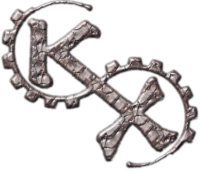




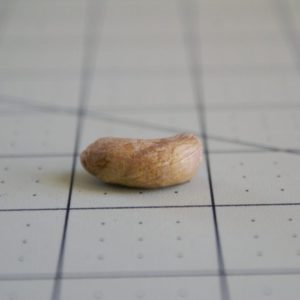
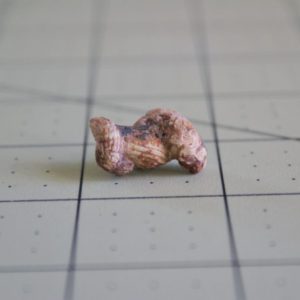
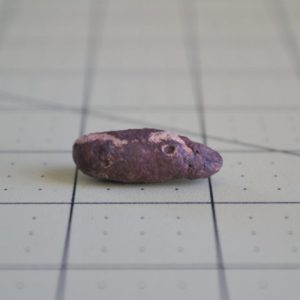
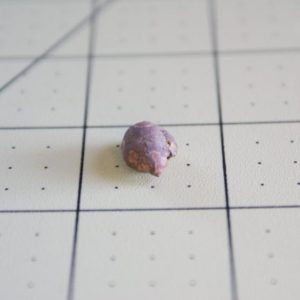
Reviews
There are no reviews yet.